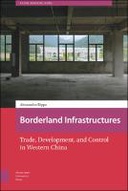Explore

Across the Chinese borderlands, investments in large-scale transnational infrastructure such as roads and special economic zones have increased exponentially over the past two decades. Based on long-term ethnographic research, Borderland Infrastructures addresses a major contradiction at the heart of this fast-paced development: small-scale traders have lost their historic strategic advantages under the growth of massive Chinese state investment and are now struggling to keep their businesses afloat. Concurrently, local ethnic minorities have become the target of radical resettlement projects, securitization, and tourism initiatives, and have in many cases grown increasingly dependent on state subsidies. At the juncture of anthropological explorations of the state, border studies, and research on transnational trade and infrastructure development, Borderland Infrastructures provides new analytical tools to understand how state power is experienced, mediated, and enacted in Xinjiang and Yunnan. In the process, Rippa offers a rich and nuanced ethnography of life across China’s peripheries.
This book is included in DOAB.
Why read this book? Have your say.
You must be logged in to comment.
Rights Information
Are you the author or publisher of this work? If so, you can claim it as yours by registering as an Unglue.it rights holder.Downloads
This work has been downloaded 131 times via unglue.it ebook links.
- 131 - pdf (CC BY-NC-ND) at OAPEN Library.
Keywords
- anthropology
- Asia
- Belt and Road Initiative.
- Border Studies
- China
- East Asia, Far East
- Economics
- Economics, finance, business & management
- Geographical Qualifiers
- Geopolitics
- Infrastructure
- International economics
- International relations
- International trade
- Politics & government
- Society & Social Sciences
- Sociology & anthropology
- thema EDItEUR::1 Place qualifiers::1F Asia::1FP East Asia, Far East::1FPC China
- thema EDItEUR::J Society and Social Sciences::JH Sociology and anthropology::JHM Anthropology
- thema EDItEUR::J Society and Social Sciences::JP Politics and government::JPS International relations::JPSL Geopolitics
- thema EDItEUR::K Economics, Finance, Business and Management::KC Economics::KCL International economics::KCLT International trade and commerce
Editions

